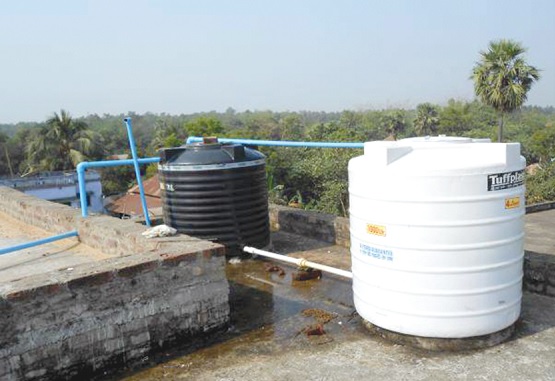
Site boreholes away from septic tanks — WRI
Any borehole constructed in a home, office or community less than 30 to 50 metres away from a septic tank is likely to be polluted with human excreta and other pathogens, the Water Research Institute of the Council for Scientific and Industrial Research (CSIR-WRI), has said.
According to the Head of the Groundwater Division of the CSIR-WRI, Dr Anthony Appiah Duah, many people in the urban areas had sited their boreholes in areas which were polluted, especially near septic tanks and that tended to affect the quality of the water produced.
Advertisement
He said there was also the need for people constructing such tanks to do so away from cemeteries, pit latrines and disposal sites, adding that his observation had shown that many did not have such knowledge.
Dr Duah, in an interview in Accra with The Mirror, said it was always important for people to test the quality of water in boreholes before consuming it to ensure that it was not polluted and, therefore, wholesome.
“If the water in the borehole is polluted and you drink it, it can lead to serious health complications,” he explained.
Engage experts
Dr Duah, therefore, advised families who wished to construct boreholes to engage experts — hydro-geologists or hydro technicians — to survey the area to identify a suitable spot to drill for water, away from any pollutant, as well as the source of the water.
He noted that it was not enough to just engage people who had been advertising to construct boreholes, even though some were able to do it.
“You must not just engage anybody who has advertised in town that they drill boreholes. Even if you do, always ask for a report on the entire work done. If the construction is done poorly, it can affect the quality of the water produced,” he said.
When asked the kind of complaints the WRI usually received, the director indicated that it ranged from poor construction of the borehole, pollution and inability of the well to be filled with water after construction.
Constructing borehole
Dr Duah advised that experts should be engaged to construct such boreholes and recommended the WRI to help with the process, beginning with the geology of the area — what controls the movement of water in the ground.
He said after the necessary drilling cuttings, water quality analysis, mechanisation and entire works had been done by the experts, they should be sealed with Polyvinyl Chloride (PVC) pipes.

“For boreholes which can be filled immediately after it rains, there is a problem with the construction so the surface water is going inside. If that happens and there is pollution from the surface water, it can lead to pollution. If the rain water is contaminated, then you are in trouble,” he said.
Galamsey and pollution
Generally, he said boreholes constructed in galamsey areas could have no problems if they were done the right way.
“Even though worse areas of poor water quality are found in mining areas, if the borehole is done correctly, it is safe. We have many data on boreholes which have been constructed in galamsey areas and they are functioning well without any difficulties because they adhered to the right procedures,” he said.
Dr Duah explained if the chemicals used in the operation of galamsey seeped into the soil and mixed with water, the effect could be rife, and cautioned that boreholes built in such areas must be done with care.
“Using chemicals such as lead in mining could lead to poisoning which results in anaemia, weakness, constipation, colic, palsy and often paralysis of the wrists and ankles. Lead can reduce intelligence in children, delay motor development, impair memory and cause hearing problems,” he stated.
He called on stakeholders to take immediate action to deal with human activities such as galamsey in order not to lead to water rationing in future.



